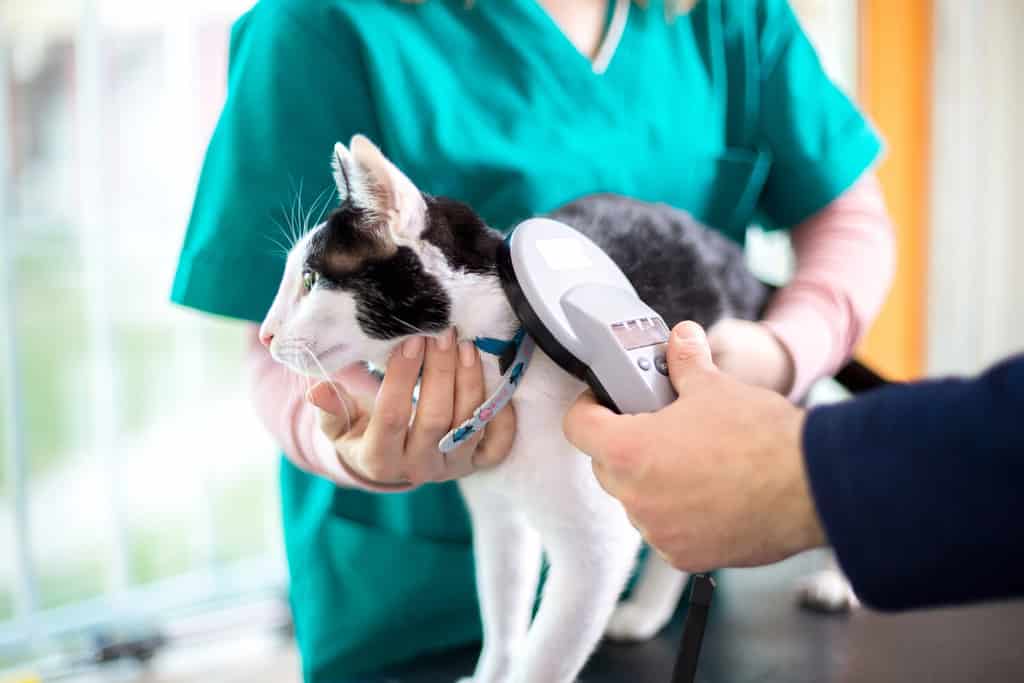There comes a time when most cat owners must ask themselves a difficult question: “Is it a good idea to let my cat explore the outdoors?” This is a tough situation. On one hand, there is essentially no going back once your cat discovers there’s a whole world outside. Curious creatures, cats want to enjoy everything life has to offer- including the sunshine, concrete, and grass. However, you still want to be responsible and keep your cats safe outdoors. After all, there are hazards galore outside.
In this article, we’ll offer you some helpful tips to navigate this sticky situation. Your feline friend might be ready to face the great outdoors, but that doesn’t mean you are. Remember, as well, that this isn’t for everyone. Sometimes, people don’t live in an area suitable for outdoor animals in any capacity (for instance, the middle of New York City). Other times, cats will go the entire duration of their lives without expressing any interest in the outdoors besides the occasional bird. Every cat and every owner is incredibly different, but hopefully, this advice can make you feel more comfortable with the idea of letting your cat have outside time.
Why Do Some Indoor Cats Want to Go Outside?

The hunting instinct of cats’ ancestors has not been fully bred out of the animal.
©Louno Morose/Shutterstock.com
If your cat’s interest in the outdoors came suddenly, you’re probably wondering why they’ve developed such a curiosity out of the blue. In truth, the answer to this is very simple. Cats crave stimulation. They have a natural hunting and stalking instinct that has stayed with them throughout the evolution of their ancestors. Anything new or exciting will catch their attention and fiercely grab ahold of it.
That’s why their inclination to explore outside develops so suddenly. They get a taste of the outside world and realize there is so much more to do and explore than they’ve previously known. This is enough for them to be captivated permanently. This might be a good thing for them, but not so much for owners who now have two choices: Allow their cat to adamantly protest their life indoors or integrate time outdoors to the best of their ability.
How To Keep Cats Safe Outdoors

If you’re going to let your cat outdoors, make sure you do it the safe, proper way.
©Angela Kotsell/Shutterstock.com
1. Don’t Leave Them Alone
The first tip for keeping your cat safe outdoors sounds simple, but it’s essential: Never allow your cat to go outside on their own. This is especially prevalent if you don’t live in a rural area, if your cat has never lived outdoors in the past, or if your cat is a kitten. Think about you would like a child: No one would let their toddler out of sight while playing in the yard. Use this same thought process when dealing with your cat. Even if it feels inconvenient, you have to ensure that your cat stays within your line of vision and your grasp. If your cat begins to get into something they shouldn’t or attempts to run off, you must be ready to secure them and safely escort them back inside.
2. Train Them To Enjoy Walks

They might not like it initially, but with enough training, you can get your cat used to wearing a harness.
©Abi’s Photos/Shutterstock.com
You’ve heard of walking your dog, but how about walking your cat? Many don’t consider it, as it seems abnormal. In reality, though, plenty of people walk their cats! This is a great way to spend time giving your cat the exercise it needs while simultaneously allowing them to explore places they weren’t able to in the past. While held securely in your hand, their opportunities for discovering something new are limitless. Not to mention, there are plenty of harness varieties on the market. Regardless of the age, breed, or build your cat has, you’ll certainly be able to find one that fits them perfectly. The harness mustn’t be too tight or too loose, as both run different unfortunate risks.
What If My Cat Hates Wearing A Harness?
Before you rule it out altogether, try a few tactics to get them used to the tool. One popular method for getting cats used to harnesses is putting them on them for a few minutes each day for a month. While they wear the harness, give them plenty of treats and positive encouragement. Hopefully, by the time you take them outside, they’ve become acclimated to the feeling.
If your cat won’t agree to wear a harness, remember that there are other options on the market to bring your cat outside without running any risks. One of these products is a see-through bag or backpack or a baby-sling manufactured specifically to hold cats. These are great options for cats who seek to stay with you and cling by your side while exploring. Every cat has their preferences, but chances are that you’ll find something that’s a perfect fit.
3. Make Sure They’re Vaccinated
An important step when you want to keep cats safe outdoors is ensuring they’re up to date on their immunizations. There are far more types of bacteria outdoors; some can cause deadly viruses in cats. Not to mention, dozens of species of creepy crawlies lurk around, just waiting to hitch a ride on your kitty. To be on the safe side, make sure that your cat is fully vaccinated before letting them explore.
It’s also helpful to ensure they are spayed/neutered, especially if you think they’ll be out for more than a few minutes. Stray cats are far more common than you’d think and can appear when you least expect them. If that does happen, some other things might appear unexpectedly. You know, like a litter of kittens.
4. Try Training Them to Come When Called

Training your cat to come when called can be vital in trying to keep your cat safe outdoors.
©Svetlana Rey/Shutterstock.com
Some people think that training cats is impossible. That’s because, unlike dogs, cats have nothing to prove. They don’t want your approval, they want some kind of incentive. There needs to be mutual, solid respect between a cat and their owner of any type of training to stick. And perhaps the most important kind of training is getting your cat to recognize their name. When your cat begins to understand that you’re calling for their attention, they’ll be more inclined to listen to what else you have to say.
Coming when called is incredibly useful when you want to allow your kitty to venture outside. If they have gone where you can’t see them but not far, your voice can lead them back to you. Sometimes, cats like to play and hide in plain sight. Training your cat to come when called is a great way to relieve your nerves and locate them efficiently.
As an added tip- try letting your cat out briefly before their scheduled meal time. This way, they’ll be naturally inclined to head back home no matter how much fun they might be having. If there’s one thing cats enjoy even more than exploring, it’s eating!
5. Don’t Let Them Out At Night
Whether it’s for two minutes or two hours, having your cat out at night is never a good idea. This is the case for multiple reasons. For instance, cats might have great night vision, but guess who doesn’t? You! This means that when your cat wanders off a bit far, it will be almost impossible for you to spot them in the dark.
There are plenty of other invisible obstacles, too. If you live in a suburban area or anywhere near a road, there’s always a chance that someone might not see your kitty crossing the road while driving. This is a terrible, tragic thing, but it unfortunately happens far more often than one would think. That’s because, aside from the routine trip to the vet and the pet store, your cat has very little experience with vehicles. The sudden, bright light from their headlights might stun them. And by then, it’s too late for them to move out of the way.
While this is slightly less of a threat, there could also be night predators in your area. One of the largest threats to your cat would be a creature like a coyote, but there is also the possibility that they could get nabbed by an eagle, owl, or other bird of prey. This is location-centric, but it isn’t something that you can brush to the side. For as often as they act as predators, cats themselves can easily become prey when caught off guard!
6. Ensure There Are Ways to Identify Them

If you have any intention of letting your cat outdoors, be sure there are ways to identify them.
©Lucky Business/Shutterstock.com
Don’t make the mistake of allowing your cat to wander outside without any form of identification. Though the most straightforward way to ensure your cat is identified is for them to wear a collar, there are reasons why some owners don’t like this idea. One such reason is that these collars have the potential to get caught in bushes and brush and could land your cat in a tough situation. But, even if your cat lacks a collar, one thing that it should not go without is a microchip. With a microchip, anyone who stumbles upon your cat thinking that it is missing (or if your cat has gone missing) can easily scan the chip to locate you.
It’s especially important to remember this if you have a particularly special or expensive breed of cat. As unfortunate as it may be, some people are selfish. If they happen upon your cat and assume it’s a stray, and the cat has no identification suggesting otherwise, there is always a risk that they will keep the cat as their own. Or even worse, sell it.
In addition to these forms of identification, always have a few high-quality photos of your cat on hand in case you need to display them or share them with others. Although, this part probably doesn’t even need mentioning. There are rarely any cat owners without several feline photographs on hand!
7. Let Them Adjust Slowly
Last but certainly not least is allowing your cat to adjust to the outdoors slowly. If you want to keep your cat safe outdoors, you must make sure that they feel comfortable. If your cat gets scared easily and runs off, it can become an issue quite fast. Assuming that your cat trusts you implicitly, there is still the added stress of external factors.
If you have a cat that has already been acclimated to the outdoors but you’ve moved into a new home, give them time. Don’t immediately let them out, no matter how loudly they shout at you. Until they have a comprehension of the inside of your home and until you have an understanding of your yard and its size, let them adjust as needed.
In the end, allowing your cat to go outdoors is a personal choice that has no true right or wrong answer. There’s nothing wrong with allowing your cat to adventure, so long as you are a responsible owner and follow certain parameters. With enough caution and training, outside time with your cat can be a fantastic experience.
The photo featured at the top of this post is © Benevolente82/Shutterstock.com
Thank you for reading! Have some feedback for us? Contact the AZ Animals editorial team.







